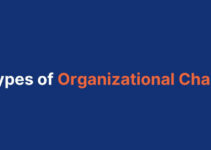Change management in non-profit organization is more frequent and consistent than in other businesses and industries like manufacturing and retail. The operations and functionality of non-profits are highly different, they need to be highly responsive to the social and economic requirements of the relevant communities. They have to be ready to deal with any type of major shakeup. Today, we’ll discuss change management in non-profit organization; implementation steps; benefits, and challenges.
The change management strategies and processes are easily applicable in non-profit organizations. It offers skills, expertise, tools, and equipment to the companies to deal with any type of uncertainty and instability. In fact, they are highly significant and help companies for the smooth transition from one state to another.
In short, change management in non-profit comprises supporting and preparing your staff, team members, and other stakeholders to collaborate with each other for the common objectives.
Changes in Non-Profit Organizations
- Launching new fundraising software
- Initiating capital campaign
- Connecting methods with board members about fundraising efforts
- Collaborating with volunteers, board members, and other staff
Implementing Change Management in Non-Profit Organization
Let’s discuss the steps involved in implementing change management in non-profit organization; they’re as follows;
Setting Objectives and Process
The goals, objectives, and process of the change program are highly significant for the nonprofit. Changing and upgrading fundraising software is one of the main processes that many nonprofits experience. For instance, if the nonprofit is planning to update the fundraising software, then it should keep in mind the following;
- Features of the fundraising software relevant to the company’s needs
- Capability to resolve existing issues
- Visibility of daily operation after its implementation
- How it would help the nonprofit to achieve its goals and objectives
Bringing Everyone Onboard
When it comes to onboarding employees and team members about the change program, they should comprehend why the change is necessary and significant. You should discuss reasons why it is necessary and predict what the future would look like with the change program. It offers you a clear comprehension of the change program.
- Envisioning the future and sharing it with the team
- Impact of the potential changes
It plays a key role in developing organizational culture to ensure the long-term success and stability of the change program.
Change Leader
The non-profit organization should have a specific change leader serving as a sponsor or executive leader. The sponsor or the executive person would ensure the success of the change program. In order to bring internal change, non-profit organizations often need fundraising support
While going through the uncertain changing phase, the executive sponsor or the change leader plays a critical than just amplifying budget requests. Instead, they have a strong interest in the vision and objectives of nonprofits.
Rewarding to Boost the Morale
Rewards, incentives, and reinforcement are highly beneficial in any stage of the change management planning process. While onboarding employees and team members relevant to the vision and objectives, the transition phase becomes much smoother than the company is experiencing. The clarity in rewards and reinforcement would make them feel like a valuable member of the team and boost their morale during the change phase.
Celebrating Small Wins
Nonprofits need to make a lot of changes and adjustments in order to reach their goals and objectives; because change is a continuous and long-term process. If you are making notable progress, then they should celebrate small wins. It would boost the team morale and make sure that the company achieves its targets and objectives in the long term.
Advantages of Change Management in NPO
Some of the main benefits and advantages of change management in non-profit organization are as follows;
Adapting Change
Nonprofit actively focuses on resolving the issues and concerns of the team members, employees, and stakeholders. It would also inform them about the benefits that the change program would offer. However, it promotes excitement among members to embrace positive changes.
Preparing Stakeholders for Change
The change leaders should educate and give sufficient time and resources to their team members to effectively implement changes. When they are feeling calm and relaxed, they will implement the changes successfully.
Receiving Feeback
Nonprofit comprises various random parts and elements working simultaneously to make an impact. Communicating change with various team members and stakeholders is one of them, and it helps the company to gather their feedback and make adjustments to the plan accordingly.
Disadvantages of Changes Management in NPO
Some of the main challenges and disadvantages of change management in non-profit organization are as follows;
- Change leaders focus on fundraising activities for the change program, and they don’t have time to provide support to the team members about the change project.
- Limited communication about the goals and objectives of the change program, it results in the form of confusion and a tense atmosphere
- Nonprofits have to deal with socioeconomic changes and conditions forcibly and they are in desperate need of developing a change-resistant culture
Conclusion: Change Management in Non-Profit Organization
After an in-depth study of the change management in non-profit organization; we have realized that nonprofit change management is continuous and consistent. If you are learning about nonprofit change management; then you should keep in mind the abovementioned implementation steps, advantages, and disadvantages.
Ahsan is an accomplished researcher and has a deep insight in worldly life affairs. He goes Live 3 days a week on various social media platforms. Other than research writing, he’s a very interesting person.


